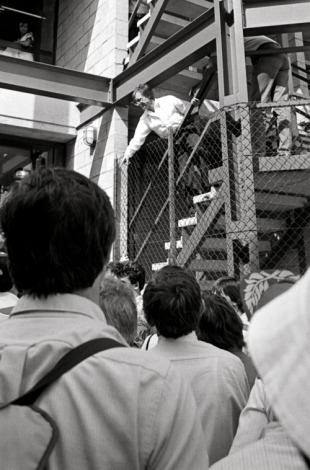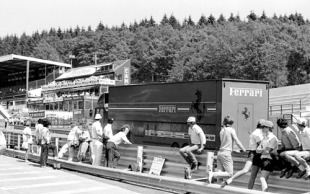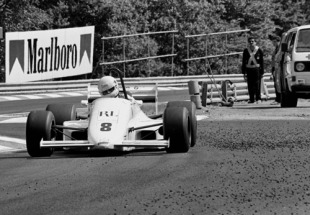
- Race:
- Belgian Grand Prix
- Drivers:
- Martin Brundle
- |
- Niki Lauda
- |
- Derek Warwick
- Circuits:
- Spa-Francorchamps
Issues of safety raised by drivers are almost as old as motor racing itself, but rarely are their feelings so strong that organisers are prepared to call off races. An exception to this came at Spa in June 1985 when the Belgian Grand Prix was scrapped after drivers refused to continue after a few practice laps on the eve of the race.
The trouble came when the authorities decided to relay the surface after complaints the track was dangerous in the wet. After undertaking extensive research, the laying of a rubberised asphalt, renowned for its excellent draining qualities, was commissioned at a cost of £3 million.
Ironically, work was repeatedly delayed by poor weather and was eventually only carried out ten days before the grand-prix weekend. Rather than refer the matter to the FIA, the organisers went ahead regardless, despite the fact almost exactly the same situation had occurred a year earlier at the Dallas Grand Prix. On that occasion the race was staged after frantic repair work with quick-trying cement. There was to be no such escape at Spa where the grand prix had only just returned after more than a decade's absence.
The problems were not initially obvious. The Belgian circuit was partly run on a public road, and when used by cars and lorries it coped. But as soon as Formula One cars, with their wide, sticky tyres, were let loose they immediately began to rip up the new surface, already softened by warm sunshine. "The results were as hazardous as they were predictable," wrote Maurice Hamilton in the Guardian.
That all was not well was obvious after the Friday practice, even though the surface was fast, and overnight remedial work did not help at all. After 25 minutes on the Saturday morning, the drivers called a halt insisting conditions were too dangerous. Few outside those with commercial interests in mind disagreed.

Rather than take any swift action, the authorities dithered, half-heartedly giving track officials six hours to put things right. But so widespread was the problem, there was never a realistic possibility they could remedy things.
At 6.00pm the conditions were inspected by drivers and officials. The confusion then grew as an announcement was made that while practice had been cancelled for the day, the race would go ahead as planned. The crowd who had remained all day in the hope of seeing some action gradually headed home believing there would at least be a grand prix on the Sunday.
However, the drivers remained adamant they were unwilling to take part. The authorities maintained overnight repairs would resolve their concerns, but they were not persuaded. "The repairs [on the Friday night] turned out to be even more slippery than the existing sections which are still breaking up," Derek Warwick said. "I don't know what they've done but the inconsistency in the track make it totally impossible to drive, let alone race."
Eventually they got hold of Jean-Marie Balestre, the president of FISA, and told him of their stand. He agreed to back them and at 8.00pm the race was called off.
"I take my hat off to the jury for making the decision," Lauda said. "It was a victory for common sense."

On the Sunday night Balestre gave an interview in which he said the Belgians had "spent £25 million three years earlier to create one of the greatest tracks in the world and then committed this inconceivable mistake". He added the rules were clear - a surface could not be altered within 60 days of a race.
At the end of June the Belgian organisers were fined a paltry $10,000 for the fiasco and even got another chance to stage the race later in the season. Fortunately, by the time the circus returned to Spa in September the problems had been sorted.
However, Spa had claimed one more victim. Two weeks before the rescheduled grand prix, Stefan Bellof, who was driving that season for Tyrrell and had been one of the drivers involved in the stand-off, crashed in a sports car race at speed and was killed instantly.
Martin Williamson is managing editor of digital media ESPN EMEA
© ESPN Sports Media Ltd.
 Martin Williamson is managing editor of digital media ESPN EMEA Martin Williamson, who grew up in the era of James Hunt, Niki Lauda and sideburns, became managing editor of ESPN EMEA Digital Group in 2007 after spells with Sky Sports, Sportal and Cricinfo
Martin Williamson is managing editor of digital media ESPN EMEA Martin Williamson, who grew up in the era of James Hunt, Niki Lauda and sideburns, became managing editor of ESPN EMEA Digital Group in 2007 after spells with Sky Sports, Sportal and Cricinfo

